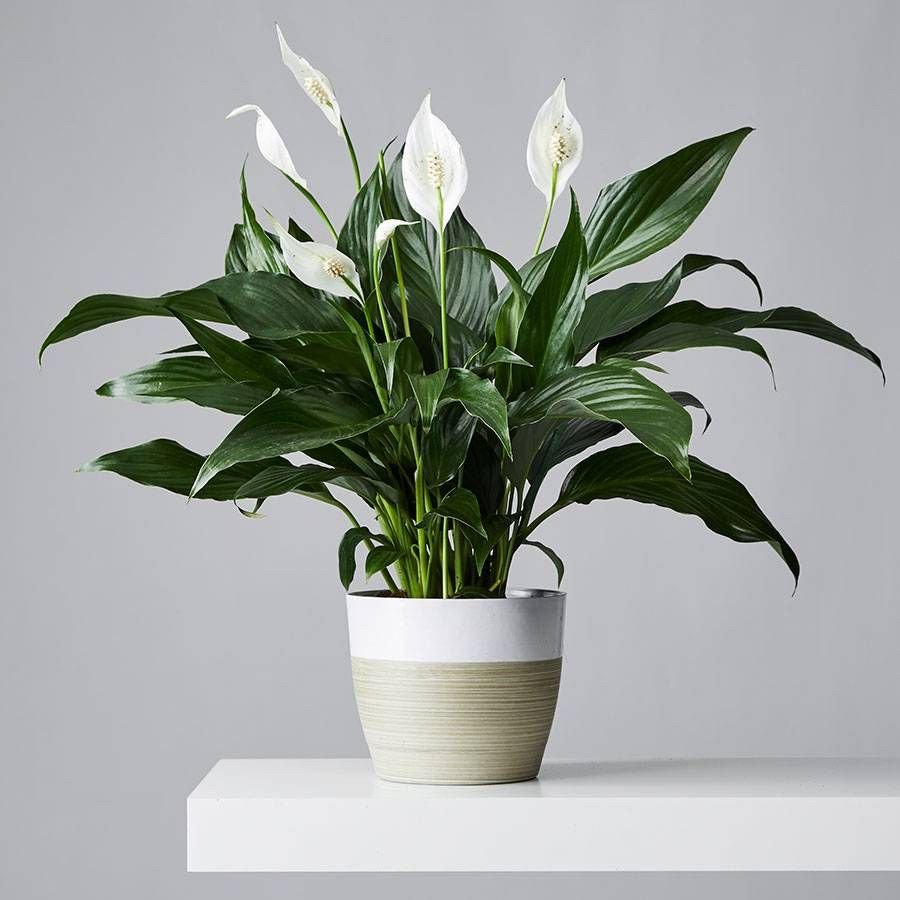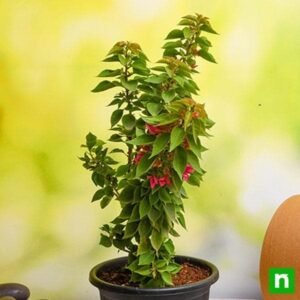Description
Spathiphyllum Plant: A Comprehensive Description
The Spathiphyllum, commonly referred to as the Peace Lily, is a popular, elegant, and easy-to-care-for houseplant known for its lush green foliage and striking white spathes. Belonging to the Araceae family, the Spathiphyllum is not a true lily, despite its common name. Native to the tropical regions of the Americas and southeastern Asia, this plant has gained global popularity for both its aesthetic appeal and its air-purifying qualities.
Botanical Overview
The genus Spathiphyllum comprises around 40 species of evergreen, herbaceous perennials. The name derives from Greek, where “spath” means “spathe” and “phyllon” means “leaf,” referencing the plant’s distinctive floral structure. The plant’s most recognized feature is its white spathe, which is often mistaken for the flower. The true flower is actually a spadix – a spike of tiny, densely packed flowers that emerges from the base of the spathe.
Physical Characteristics
- Leaves: Peace Lilies are characterized by their glossy, dark green leaves that can grow up to 12–20 inches long, depending on the species and cultivar. The leaves have a lanceolate shape and emerge directly from the soil via basal stems. Their lush appearance gives the plant a tropical, vibrant presence.
- Flowers: The spathe, a modified leaf, is usually white, though it can fade to a pale green with age. It surrounds the spadix, a cylindrical structure that holds the tiny true flowers. When mature, the spathe resembles a white flag of peace, which is why the plant is associated with serenity and calm.
- Height: Depending on the variety, Spathiphyllum plants can range in height from about 1 to 4 feet. Dwarf cultivars are perfect for tabletop decor, while larger varieties can serve as dramatic floor plants.
Growth and Care Requirements
One of the main reasons for the Spathiphyllum’s popularity is its low maintenance requirements, making it ideal for both novice and experienced plant owners.
Light
Peace Lilies prefer bright, indirect light, though they can tolerate low-light conditions. Direct sunlight can scorch their leaves, while too little light may result in fewer blooms. In offices and homes, placing them near a north- or east-facing window provides optimal light conditions.
Watering
This plant is known for its dramatic droop when it becomes too dry, which is a handy indicator for watering. However, it quickly recovers after being watered. Generally, water when the top inch of soil feels dry. Overwatering should be avoided as it can lead to root rot.
Humidity and Temperature
As a tropical plant, Spathiphyllum thrives in high humidity. If the air is too dry, the leaf tips may brown. Misting the plant or placing it on a humidity tray can help maintain moisture levels. Ideal temperatures range between 65°F to 85°F (18°C to 29°C). The plant is sensitive to cold drafts and temperatures below 45°F (7°C).
Soil and Fertilizer
Spathiphyllum prefers well-draining potting soil with a rich, organic mix. A peat-based soil with added perlite or bark works well. Fertilize every 6 to 8 weeks during the growing season (spring and summer) with a balanced, water-soluble fertilizer to encourage blooming.
Common Varieties
Several cultivars of Spathiphyllum have been developed, varying in size, leaf shape, and blooming behavior. Some popular varieties include:
- Spathiphyllum ‘Mauna Loa Supreme’: One of the most widely grown varieties, featuring large, glossy leaves and big white spathes.
- Spathiphyllum ‘Wallisii’: A compact variety with smaller leaves and blooms, ideal for small spaces.
- Spathiphyllum ‘Sensation’: A larger variety with broad leaves, often used as a statement floor plant.
- Spathiphyllum ‘Domino’: Notable for its variegated, speckled foliage, offering a more decorative look.
Benefits
Air Purification
Spathiphyllum was famously highlighted in NASA’s Clean Air Study, where it was shown to remove indoor pollutants such as formaldehyde, benzene, carbon monoxide, and trichloroethylene. While a single plant won’t purify an entire home, a collection of peace lilies can contribute to improved air quality.
Aesthetic Value
The plant’s sculptural white blooms and glossy leaves add a touch of elegance and tranquility to any space. Its evergreen nature means it remains attractive year-round, and its upright growth habit makes it well-suited for a variety of decorative containers.
Symbolism
Peace Lilies symbolize peace, purity, healing, and rebirth. They are commonly given as gifts during times of sympathy, recovery, or celebration. In feng shui, they are said to enhance harmony and reduce conflict in the home or workspace.
Toxicity and Safety
While beautiful, it’s important to note that Spathiphyllum contains calcium oxalate crystals, making it toxic to pets and humans if ingested. Chewing or biting the plant can cause irritation to the mouth and digestive system. Keep the plant out of reach of cats, dogs, and small children.
Propagation
Peace Lilies are typically propagated through division rather than seeds. The plant naturally forms clumps over time, and these can be gently separated and replanted. Propagation is best done in spring when the plant begins actively growing. Ensure each division has several healthy leaves and roots to promote successful establishment.
Common Problems and Solutions
- Yellowing Leaves: Often due to overwatering or poor drainage. Allow soil to dry slightly between waterings.
- Brown Leaf Tips: May be caused by low humidity, over-fertilization, or poor water quality. Use filtered water and increase humidity.
- Lack of Blooms: Insufficient light is the most common cause. Move to a brighter location or reduce nitrogen-heavy fertilizers.
- Pests: Peace Lilies are generally pest-resistant but can occasionally attract spider mites, mealybugs, or aphids. Wipe leaves regularly and treat infestations with insecticidal soap or neem oil.
Cultural and Historical Significance
The Peace Lily has long been a symbol in various cultural contexts. It is often used in religious ceremonies, funerals, and spiritual events due to its pure white bloom and association with peace and healing. It is also a popular choice for corporate offices, hospitals, and wellness centers due to its clean, calming appearance and low care needs.
Conclusion
The Spathiphyllum or Peace Lily is much more than just a decorative houseplant. With its elegant aesthetic, ease of care, air-purifying abilities, and deep symbolism, it holds a special place in homes, offices, and hearts around the world. Whether you are an experienced plant collector or a beginner looking for a reliable and beautiful plant, the Peace Lily is an exceptional choice that brings both beauty and benefits to any indoor environment.







 Plant Pack For Healthy Home-Office
Plant Pack For Healthy Home-Office 

Reviews
There are no reviews yet.